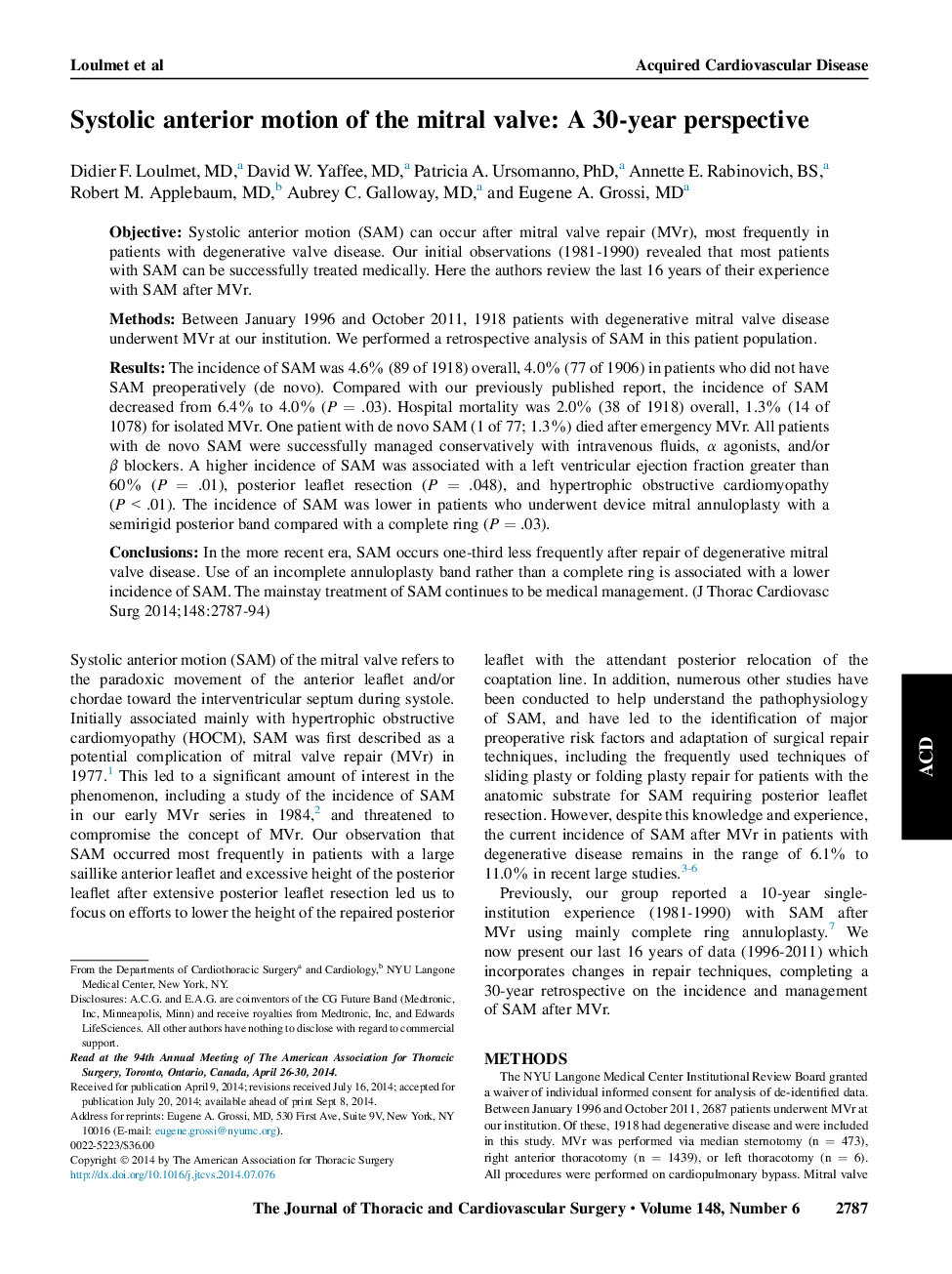| Article ID | Journal | Published Year | Pages | File Type |
|---|---|---|---|---|
| 5989869 | The Journal of Thoracic and Cardiovascular Surgery | 2014 | 8 Pages |
ObjectiveSystolic anterior motion (SAM) can occur after mitral valve repair (MVr), most frequently in patients with degenerative valve disease. Our initial observations (1981-1990) revealed that most patients with SAM can be successfully treated medically. Here the authors review the last 16 years of their experience with SAM after MVr.MethodsBetween January 1996 and October 2011, 1918 patients with degenerative mitral valve disease underwent MVr at our institution. We performed a retrospective analysis of SAM in this patient population.ResultsThe incidence of SAM was 4.6% (89 of 1918) overall, 4.0% (77 of 1906) in patients who did not have SAM preoperatively (de novo). Compared with our previously published report, the incidence of SAM decreased from 6.4% to 4.0% (P = .03). Hospital mortality was 2.0% (38 of 1918) overall, 1.3% (14 of 1078) for isolated MVr. One patient with de novo SAM (1 of 77; 1.3%) died after emergency MVr. All patients with de novo SAM were successfully managed conservatively with intravenous fluids, α agonists, and/or β blockers. A higher incidence of SAM was associated with a left ventricular ejection fraction greater than 60% (P = .01), posterior leaflet resection (P = .048), and hypertrophic obstructive cardiomyopathy (P < .01). The incidence of SAM was lower in patients who underwent device mitral annuloplasty with a semirigid posterior band compared with a complete ring (P = .03).ConclusionsIn the more recent era, SAM occurs one-third less frequently after repair of degenerative mitral valve disease. Use of an incomplete annuloplasty band rather than a complete ring is associated with a lower incidence of SAM. The mainstay treatment of SAM continues to be medical management.
